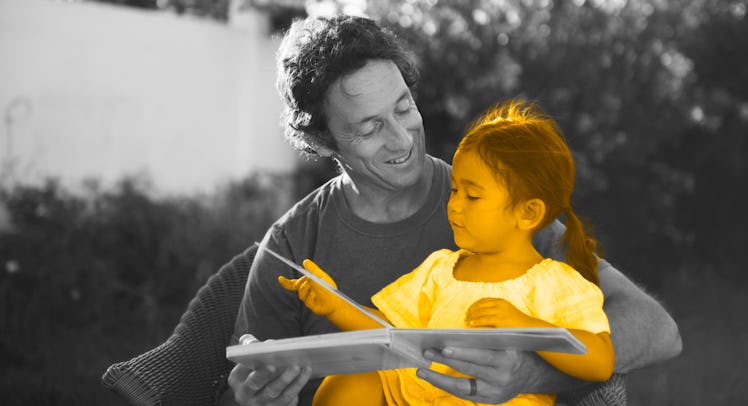How to Find Kindergarten Books That Will Make Kids Want to Read
The best way to encourage kindergartner reading is to let kids lead the way.

kindergarten books (14800, 80.4) ranked 23
kindergarten reading books (4400, 75.05) ranked 13
Add/boost additional keywords in first graph:
reading books for kids (14800, 82.07) ranked 48
Parents into reading books for kids can easily overthink kindergarten books. After all, parents who read to their kid often shape a child’s book selection. But as children progress and gain independence, they need to indulge in their own interests. That’s why finding kindergarten books that will make a child want to read should have one directive: Let children choose their own books.
The optimal method for finding the best kindergarten books is actually pretty simple. Take the kid to the library and let them pick a finite number of books. Alternatively, parents can take them to a bookstore and allow them to pick one or two books. Point them at the children’s section and let them loose.
How to Find Kindergarten Books Kids Want to Read
- Take them to the library regularly and give them carte blanche to pick out a finite number of books.
- Follow up activities with encouragement to find books that will help them learn more.
- Attend story times and other group-reading activities.
- Communicate with teachers to develop reading lists based on what they’re learning in class.
- Teach the child to be proactive with reading by giving them the tools they need to seek the books they crave — including how to look up books and how to ask a librarian for help.
- Read to them, and select books for a story time that follow up on their interests.
- Find serialized narratives or thematically linked books that will make kids want to continue a story.
“I firmly believe there’s nothing bad to read. It’s letting your child guide what sorts of books they want to learn about,” says Jennifer Driscoll, youth services senior librarian at the Pasadena Public Library in Southern California. “It can be stories, nonfiction, how-to guides, comic books, magazines. You can find any topic. Is your kid into outdoors and nature? Go explore the nature section. It’s keying into what your child is interested in and bridging out from there.”
Driscoll says parents often get hung up on the idea that not all reading is “healthy” reading for a kindergarten-age kid. Such thinking is extremely antiquated. Media in all forms has evolved dramatically since the days of Dick and Jane. It’s become clear that regardless of what a kid’s reading, it’s a good thing, provided parents are okay with the content. The best example of this is the rise of comic books and graphic novels. Kids love them. Some parents think they’re trash. But those parents should reconsider.
“People feel like they’re some sort of inferior type of reading, but it’s actually pretty complex when you break it down,” says Driscoll. “You have to look at the words, you have to look at the illustrations, and you have to look at the interplay between the two. When you think about what a kid is doing when they’re reading a comic, they’re taking information from a lot of different sources and putting them together in a way that makes sense. Visual literacy is important too.”
Of course, just throwing a kid in a library or bookstore doesn’t help when a kid isn’t already excited about books. So, if a kid becomes enraptured with dinosaurs at a museum, a follow-up to find a picture-intensive book at the gift shop could lead to more reading. After a kid becomes obsessed with a movie, a librarian could help them find a book that continues the story.
Reading activities can also help. Driscoll points out frequent group-reading activities, such as story time at libraries, can help mirror children’s group-reading at school. Children are hams. They like to be involved, to show off their skills. Storytimes and other social reading activities let them indulge that as well, and the validation that comes with reading in front of a group — or struggling through difficult words with them — turns the act of reading into something more exciting, thus encouraging them to find more books that they want to share with others.
“People often think of reading as a solitary endeavor. But storytime takes that and turns it on its head, and it becomes a more shared group experience,” Driscoll says. “They get to have a fun interplay between the book, the librarian, and everyone else in the room.”
This article was originally published on